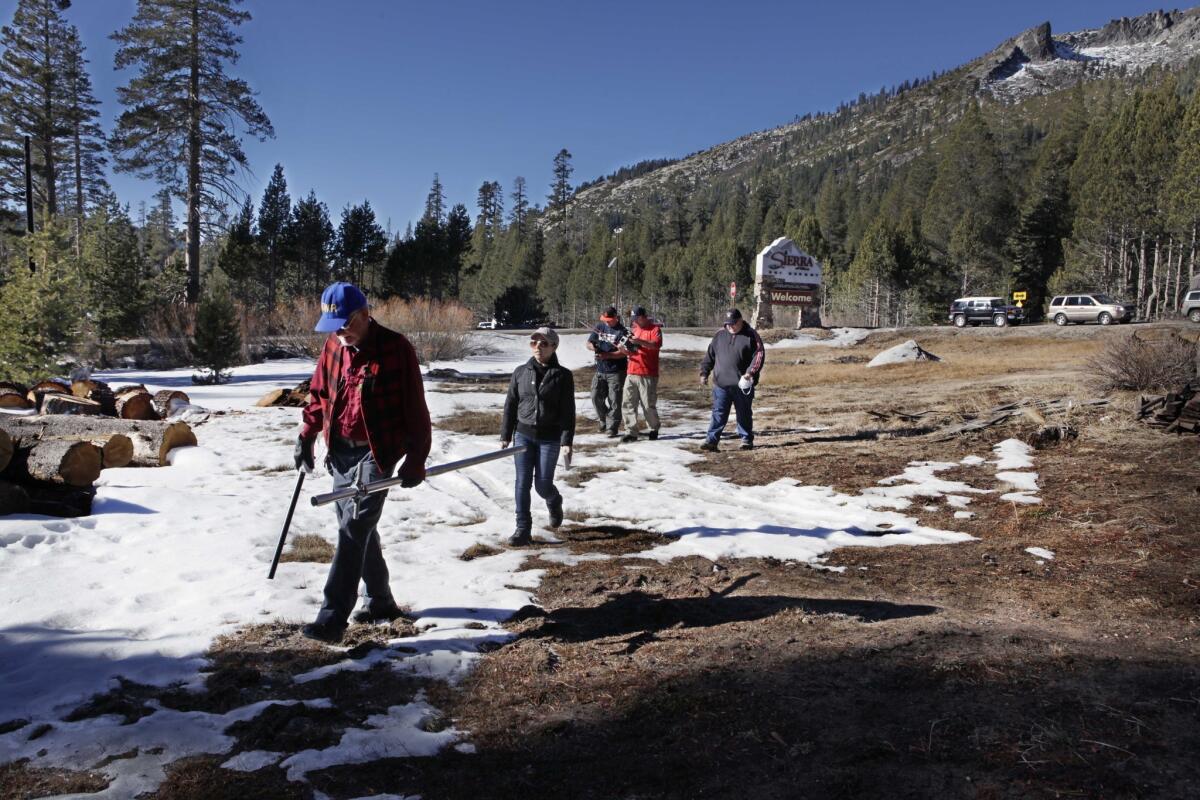Meager Sierra snowpack is way below average

- Share via
The signs aren’t good when the chief of California’s snow survey has to walk over bare ground to take a snowpack measurement in the Sierra Nevada, as Frank Gehrke did Friday near Echo Summit.
Manual and electronic readings up and down the range placed the statewide snowpack at 20% of normal for this date, adding to worries that 2014 could be a bad drought year.
The meager snowpack was not a surprise. Last year was California’s driest in 119 years of records, according to the Western Regional Climate Center in Reno.
Los Angeles and other cities around the state recorded their lowest precipitation amounts for a calendar year. The levels of key reservoirs have been dropping when they should be rising with winter rains.
Gov. Jerry Brown has yet to declare a drought emergency. But last month the state Department of Water Resources formed a drought management team.
“While we hope conditions improve, we are fully mobilized to streamline water transfers and take every action possible to ease the effects of dry weather on farms, homes and businesses as we face a possible third consecutive dry year,” department director Mark Cowin said in a statement. “Every Californian can help by making water conservation a daily habit.”
Storage in Lake Shasta and Lake Oroville, the two largest reservoirs in the state, is 57% of average for the date. Several other major reservoirs are in better shape, largely due to supplies left over from December 2012, when storms drenched many parts of California.
Thanks to that month, statewide precipitation in the 2013 water year, which ended Sept. 30, was 73% of average -- the 29th driest on record, according to the regional climate center.
If this winter stays dry, the hardest-hit will likely be farmers in some parts of the San Joaquin Valley and rural communities that depend on wells.
In Southern California, regional water managers say they have enough supplies in reserve to maintain deliveries for the next two years and do not expect to ration sales.
Storage in Pyramid and Castaic lakes, the two state reservoirs that the Southland draws directly from, is slightly above average for the date.
Diamond Valley Lake in Riverside County, where the Metropolitan Water District of Southern California stores imported supplies, is nearly three-quarters full.
The snowpack, which is a measurement of the snow’s water content, not its depth, was the lowest in the northern mountains, at 11% of average for the date. It was the highest in the southern Sierra, at 30% of the norm.
The statewide snowpack figure of 20% tied with 2012 as the driest early January reading in 25 years of records.
Twitter: @boxall







